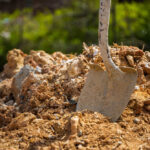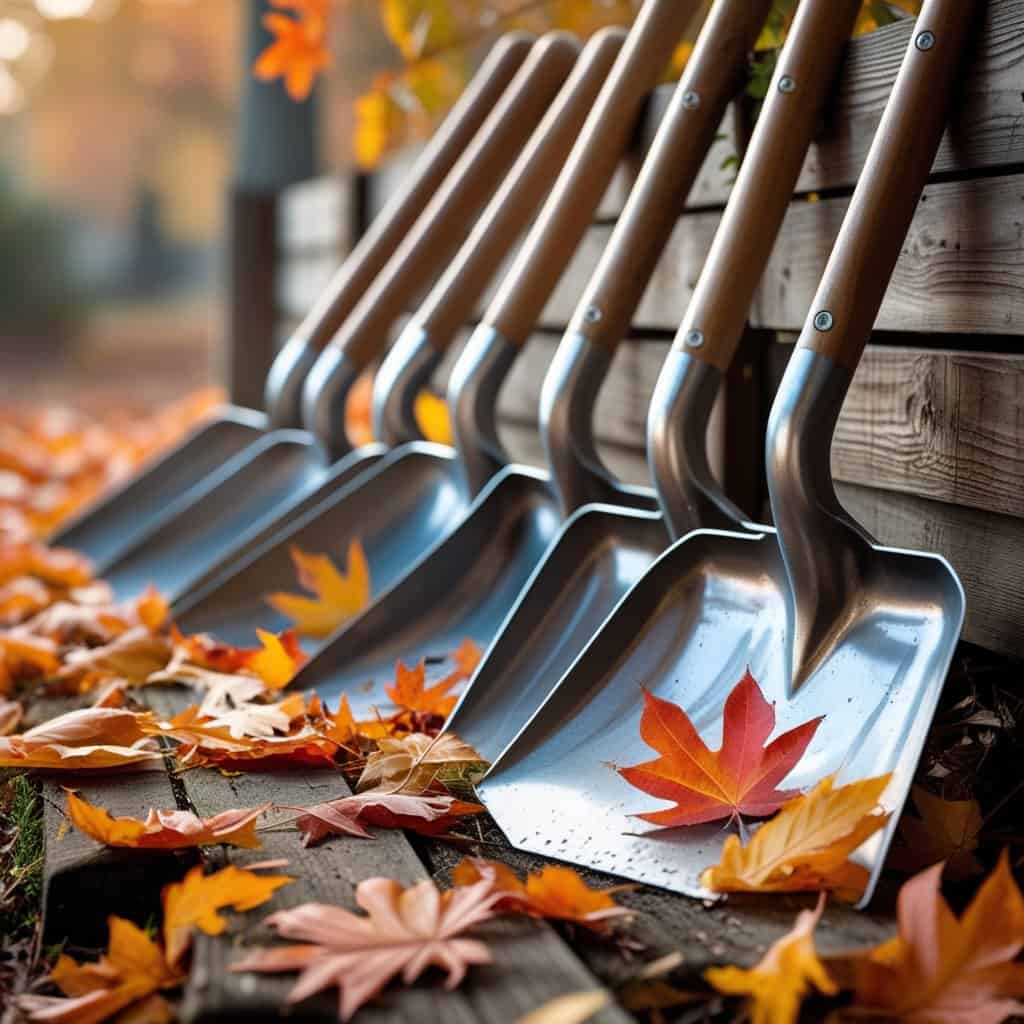Hand hoes are garden tools that allow weeding, cultivation, and soil digging with just one tool. They are lightweight and ideal for weeding tight spaces in the garden, such as between plants, garden beds, or rocks.
Table of Contents
Hand Hoe Basics
Like shovels, the hand hoe helps dig in soft and hard soil, cutting through tough roots. Some factors to consider when choosing a hoe include:
- The size and shape of the hand hoe head.
- The quality of the material used.
- The length and weight of the handle.
- Comfort and grip.
Most hand hoes come in different weights, from 2 to 12 pounds, depending on your preference and the task. So naturally, the weight impacts how comfortable you feel using the hoe. You can also choose a hoe with a long handle for easy leverage and control when digging in hard soil or chopping through roots, and it has sharp edges for digging sturdy tilling.
A hand hoe should be durable, strong, and made from sturdy materials such as wood, steel or fibreglass. The most common type is the steel hoe, which is durable and long-lasting. It can be heavy and difficult to maneuver but also strong and rust-resistant.
The hoe handle must be long enough to provide adequate grip but not too long to be cumbersome or tiring. Look for a hoe with a comfortable ergonomic handle that will make the job easier and more comfortable. Also, consider the blade shape: round-edged hoes are ideal for planting and weeding, while flat-edge hoes are better for chopping through roots and hard soil.
Types Of Hand Hoes
Various hoes are available, from draw hoes to grubbing and collinear hoes. Each type of hoe has unique features and benefits, making it easy to find one that suits your needs and preferences. To help you decide on the best hand hoe for your gardening needs, consider the type of gardening you do, the terrain you’re working on, and any safety concerns.
Below is a list of hand hoes and the best use for each one.
| NAME | BEST FOR | SOIL TYPE |
|---|---|---|
| Action Hoe | Cutting through tough weeds | Crusty or soft soil |
| Circle Hoe | Making shallow furrows | Hard, soft, loose |
| Cobra Hoe | Weeding around plants without disturbing their roots | Hard, soft, loose |
| Coleman Hoe | Cultivating narrow trenches | Soft or loose |
| Collinear Hoe | Long handles perfect for reaching difficult weeding spots | Soft or loose |
| Cultivator Hoe | Loosening soil and removing weeds | Hard, soft, loose |
| Diamond Hoe | Cultivating and moving soil in small areas | Soft or loose |
| Draw Hoe | Grubbing out roots or cultivating soil | Hard, soft, loose |
| Eye Hoe | Eye-shaped socket allows grubbing out roots, cultivating soil in small spaces, creating deep furrows | Hard, soft, loose |
| Field Hoe | Weeding, cultivating soil, and preparing beds for planting; create ridges or furrows in the ground. | Hard, soft, loose |
| Floral Hoe | Grubbing out roots or cultivating soil | Hard, soft, loose |
| Gooseneck Hoe | Grubbing out roots or cultivating soil | Hard, soft, loose |
| Grape Hoe | Grubbing out roots or cultivating soil | Hard, soft, loose |
| Grub Hoe | Deep roots and breaking up hard soil | Hard, soft, loose |
| Half Moon Hoe | Grubbing out roots or cultivating soil | Hard, soft, loose |
| Heart Hoe | Heart shaped blade perfect for cultivating soil in tight spaces | Soft, loose |
| Hooke and Crooke Hoe | Dig trenches | Soft, loose |
| Hula Hoe | Curved blade that slices through soil easily | Crusty or soft soil |
| Korean Ho-Mi Hoe | Grubbing out roots or cultivating soil | Hard, soft, loose |
| Loop Hoe | Cutting through thick vegetation | Soft, loose |
| Onion Hoe | Grubbing out roots or cultivating soil | Hard, soft, loose |
| Oscillating Hoe | Weeds between rows of plants | Crusty or soft soil |
| Paddle Hoe | Aerating soil and loosening packed down dirt, weeding areas heavily infested with weeds | Hard, soft, loose |
| Pattern Hoe | Grubbing out roots or cultivating soil | Hard, soft, loose |
| Plow Hoe | Breaking up hard soil | Hard, soft, loose |
| Pointed Hoe | Making precise cuts in densely weeded areas and reaching into narrow places to remove weeds | Hard, soft, loose |
| Push Hoe | Flat blade that can be used to push dirt around in gardens or fields | Soft or loose |
| Push Wheeled Hoe | Moving large amounts of dirt, removing multiple weeds at once | Hard, soft, loose |
| Push-n-Pull Hoe | Cultivate soil | Soft or loose |
| Ridging Hoe | Creating shallow furrows for planting or level out a surface | Hard, soft, loose |
| Scovil Hoe | Grubbing out roots or cultivating soil | Hard, soft, loose |
| Scuffle Hoe | Light to medium duty removal of both emerging annual and re-emerging perennial weeds | Soft or loose |
| Speed Hoe | Quickly remove large amounts of weeds at once | Soft or loose |
| Stirrup Hoe | Looped blade that can be used to cut through weeds with ease | Crusty or soft soil |
| Swage Hoe | Curved blades perfect for removing deep rooted weeds | Soft or loose |
| Swan Neck | Grubbing out roots or cultivating soil | Hard, soft, loose |
| Swoe Hoe | Break up clumps of dirt | Soft or loose |
| Trapezoid Hoe Upright | Grubbing out roots or cultivating soil | Hard, soft, loose |
| Upright Hoe | Short handles ideal for working close to plants | Soft or loose |
| Warren Hoe | Grubbing out roots or cultivating soil | Hard, soft, loose |
| Winged Weeder Hoe | Remove stubborn weed roots | Soft or loose |
| Wire Weeder Hoe | Great for removing grasses and other weeds | Soft or loose |
Tips To Use Your Hand Hoe Efficiently
If you want to make using a hand hoe easier or more efficient, here are some tips and tricks.
- Keep your back straight and use proper form when digging with a hoe. Proper form means standing upright with your feet slightly wider than shoulder-width apart. Then bend your knees slightly and bring the hoe handle close to your body, ensuring its blade is facing away from you so you don’t accidentally hit yourself.
- Keep the hoe’s handle as close to horizontal as possible while swinging it forward through the soil, as this will help ensure that you get maximum leverage with each swing and reduce the risk of over-exertion or straining your back muscles.
- Wearing gloves can also help prevent blisters on your hands.
- Break up the soil in small areas instead of hoeing large sections simultaneously.
- Shorter chops will help you work more effectively and efficiently.
- If your hoe is not digging easily into the soil, consider sharpening the blade for improved cutting power, as this will make the hoeing process much smoother.
Care And Maintenance Tips For The Hand Hoe
- Clean the handle and blade after each use by scraping off any debris with a hard-bristled brush or an old kitchen scrubber, then wipe down the handle and blade with a damp cloth to keep it from becoming slippery and to remove any dirt or residue. Doing this will help keep dirt and grime from damaging the handle and blade surface when not in use.
- Sharpen the blade regularly to maintain its sharp edge. You can do this by rubbing a nail file on both sides of the blade or taking it to a professional sharpener for more precise results. Our guide Sharpening An Axe Basics is a great place to learn sharpening techniques.
- Apply a light coat of oil on the blade and handle after every few uses to protect it from rust and moisture damage.
- Store your hoe in a dry place away from direct sunlight, which could cause rusting and corrosion over time and dry out wood handles.
- Ensure there are no broken pieces, damages or weak spots that need attention before each use so you can use your hoe safely and effectively again.
Final Thoughts
Overall, hoes are some of the most versatile and essential tools that you will need for gardening. Hand hoes come in different shapes and sizes depending on what type of job you’re doing. Whether turning hard soil, weeding, aerating or creating deep furrows, hand hoes are the number one gardening tool, along with a shovel that makes any garden work easier and more efficient.






